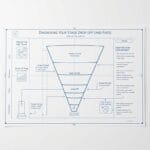Ever clicked on a website and then decided to leave some moments later because it took too long to load or was just plain frustrating to navigate? We all do that, and these are precisely the kinds of experiences that Google is trying to minimize with Core Web Vitals. For those who own websites or are digital marketers, there is no denying the importance of getting Core Web Vitals right. Without proper optimization, you could be seriously derailing a very good ranking and making for lousy user experiences. Now, let’s look at exactly what Core Web Vitals are and how to optimize a site to do the best with these metrics.
What Are Core Web Vitals?
Core Web Vitals are a subset of factors that Google considers relevant to the overall user experience of a webpage. They represent, according to Google, a much bigger initiative called Web Vitals—a drive to provide unified guidance for quality signals essential in delivering a great user experience on the web. Core Web Vitals comprise three key components:
Largest Contentful Paint: Loading performance is measured. It marks a point in the page load timeline whereby the main content of the page has likely loaded. For a good user experience, LCP should occur within 2.5 seconds from when the page first starts loading.
First Input Delay: It measures interactivity. It is a measure of the experience users believe when they are trying to interact with a non-interactive page. For a good user experience, an FID less than 100 milliseconds shall be considered for the pages.
Cumulative Layout Shift: This is a measure for visual stability. It measures how often users experience unexpected layout shifts. In order to provide a good user experience, pages shall maintain a CLS less than 0.1.
What are Core Web Vitals, and why do they matter?
Core Web Vitals represent a set of metrics that Google has constructed to quantify the quality of user experience on a website. They focus on three key aspects: Loading, as represented by LCP; Interactivity, represented by FID; and Visual Stability, represented by CLS. These metrics are of importance because they are inputs that have direct implications on user satisfaction and engagement. A website that loads fast, responds promptly to user interactions, and is visually stable has way more improved user experience, leading to higher retention rates and better search engine rankings.
How can I measure the Core Web Vitals of my website?
Google PageSpeed Insights: Using this tool will provide you with detailed reports regarding your website’s performance, including Core Web Vitals. It will give you recommendations based on real user data.
Google Search Console: In the Search Console, you can see in the Core Web Vitals report the performance of your pages concerning real users’ experiences with those pages. It’s Field Data.
Web Vitals Extension: This Chrome extension allows you to get real-time feedback on Core Web Vitals while you surf your website.
What are the common issues which impact Core Web Vitals?
Slow Server Response Times: If your server response time is too slow, it may delay the loading of your main content and thus affect LCP.
JavaScript Execution: Heavy JavaScript may delay user interactions and thus affect FID.
Unexpected Layout Shifts: Elements that load asynchronously or have no size attribute can cause unexpected shifts in the layout and thus affect CLS.
How can I improve Largest Contentful Paint LCP?
Optimising Images: Ensure that the images are optimized and in proper format. Responsive images and modern formats such as WebP should be used.
Minifying CSS and JavaScript: This essentially involves reducing the size of CSS and JavaScript files. Any extra CSS and JavaScript can be minified and deferred by a developer.
Improving Server Response Time: One can make use of content delivery networks to serve the content faster, and ensure that the server is fine and working well.
What are some techniques for reducing First Input Delay?
Minimise JavaScript: Slim down third-party code and make sure your JavaScript is efficient. Consider breaking big tasks into smaller, asynchronous ones.
Use Browser Caching: Store resources that are accessed often locally using browser caching.
Optimize Main-Thread Work: Keep the main thread as idle as possible, avoid less important tasks that can impact interactivity.
How do I get a good CLS?
Provide Size Attributes for Images and Videos: Put width and height size attributes on all your images and videos to reserve enough space.
Do Not Inject Content Above Existing Content: Be mindful of how new content ultimately gets injected onto the page, such as ad content or banner content. Make sure that it doesn’t push existing content down.
Use transform animations: Prefer transform animations over those triggering layout changes in the width and height properties, for example.
How do Core Web Vitals impact my website’s SEO?
It was announced by Google that Core Web Vitals are included in the page experience signals used to rank pages. That means, as of now, sites having good Core Web Vitals scores tend to rank high in search results. Enhancing your Core Web Vitals will increase your search engine appearance and drive organic traffic, also boosting user engagement.
Which of the following tools can assist in monitoring and improving Core Web Vitals?
Google PageSpeed Insights: Provides insights and recommends best practices to improve your Core Web Vitals.
Lighthouse: Open source, automated tool for enhancing the quality of web pages. Performance, accessibility, SEO audits … and more.
Web Vitals Extension: This Chrome extension is actively reporting your site’s Core Web Vitals as you navigate.
Will enhancing Core Web Vitals really help my website’s conversion rate?
In most cases, enhanced Core Web Vitals will directly result in improved user experience, meaning conversion rates are often better. If your site loads quickly, is interactive, and has stable visuals, users are more likely to remain on the site, engage with content, and execute a desired action.
Understanding and improving Core Web Vitals is critical if a website is going to offer the best possible user experience and rank highly in search engines. You will help a great deal of your users if you concentrate on improving according to these metrics—LCP, FID, and CLS. Keep checking your Core Web Vitals from time to time using such tools as Google PageSpeed Insight and Search Console, then make the proper adjustments to have your site hit these crucial metrics. Keep in mind that the speed, interactivity, and stability of a website please not only Google but also your visitors, creating high engagement and conversion rates.
Frequently AskedQuestions
1. How often should I be checking my Core Web Vitals?
It’s good to keep an eye on Core Web Vitals regularly, especially after making considerable changes to your website. You can use tools like Google Search Console and PageSpeed Insights to monitor it.
2. How much is a good score for Core Web Vitals?
According to Google, it considers LCP less than 2.5 seconds, FID less than 100 milliseconds, and CLS less than 0.1 for a good user experience. You would want to shoot for these benchmarks to make sure users have a positive experience on your site.
3. Can improvements to Core Web Vitals really impact my website’s user experience?
Absolutely! Improving Core Web Vitals directly enhances user experience by increasing the speed, interactivity, and visual stability of a webpage. There are increases in user satisfaction, higher engagement, and an improved overall performance.
Donec scelerisque enim non dictum aliquet. Sed ec nunc. Suspendisse volutpat elit nec nisi congue tristique eu at velit. Curabitur pharetra ex non ullamcorper condimentum. Morbi sit amet dui convallis, mattis augue id, ullamcorper massa.
Duis dictum vestibulum ante vitae ullamcorper. Phasellus ullamcorper, odio vitae eleifend ultricies, lectus orci congue magna, in egestas nulla libero non nisl. Etiam efficitur in arcu ut lacinia.








